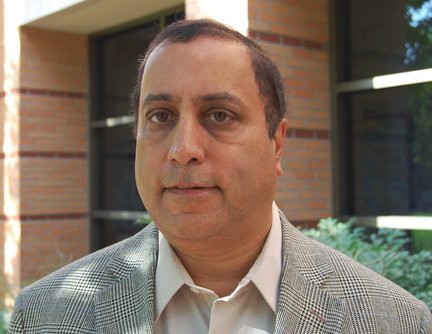Seidman college predicts health care trends for 2011

Courtesy Photo / gvsu.edu Paul Isley, Associate Professor of Economics
Jan 9, 2011
Grand Valley State University hosted the annual health care forum on Thursday at the Loosemore Auditorium, which detailed the trends in West Michigan health care for 2011.
Seidman College of Business professor Hari Singh and Paul Isely, department chair and associate professor, discussed three different trends forecasted for the coming years: knowledge foundations, risk variables such as drinking, smoking and obesity, and benchmarking Grand Rapids against Cleveland, Ohio and Portland, Ore. in terms of medical patents.
One of the larger topics during the forum was the economics of health care. Isely said the health care industry in Michigan is growing by 12 percent while manufacturing jobs are decreasing.
“Not all health care jobs are growing, but many are, so that is important for us,” he said. “It is important to see how people will be earning money in the near future.”
Singh said 18 percent of the national gross domestic product is spent on health care. Three factors that drive the cost of care include technology because health care is becoming more sophisticated, the aging population with the number of persons over 45 needing more health care and lifestyle choices.
“(Lifestyle choices) is what the risk variable is all about – how many people are smoking, binge drinking, becoming obese, etc.,” Singh said. “The public policy has to be to try to change the lifestyle choices. Ultimately it becomes an issue of personal responsibility and trying to adopt a healthier lifestyle.”
The Thursday health forum also featured a panel discussion on health care predictions for 2011. Panelists included CEO of Spectrum Health Richard Breon, President of West Michigan Area Health Underwriters Dominic Siciliano and Susan Sevensma, director of medical education at Metro Health Hospital. WZZM anchor Valerie Lego served as moderator.
Michael Hampton, vice president of Raymond James and Associates, also sat on a panel and shared information about the investments in regards to the health care industry.
“One of the areas that I feel is most attractive is the technology businesses that can service the health care industry in (ways) of providing interconnectivity software, better record keeping for patients, having more access for patients medical records, etc.,” he said. “I think it is going to make health care more efficient. Having appropriate access to information without violating patient confidentiality can provide tremendous amounts of savings because of efficiencies.”
The health care bill currently going through the House was also brought up at the discussion. The panelists and GVSU professors agreed the uncertainty of content within the bill makes it difficult to predict the future of Michigan’s health care sector.
“It’s a very complicated system, and we’ve changed things in ways we have never changed it before,” Isely said. “We don’t have a historical basis to say, ‘This is what’s going to happen.’ So that uncertainty is a bad thing.”
Despite the predicted growth within the health sector, Isely said students should be aware of the changes and pay close attention to how the provision of health care is going to be done.
“It’s important to keep your eye on it and determine how it’s going to affect your industry,” he said. “Even if you don’t think it affects what you are planning on going (into), increases in health care changes the costs of the business that you are in.”

























